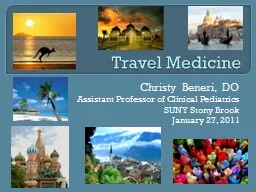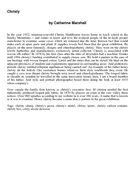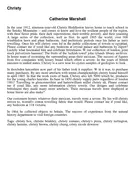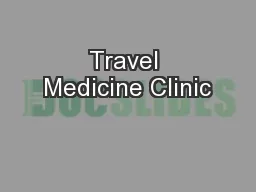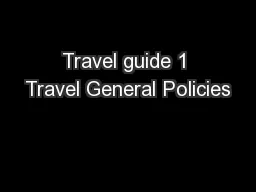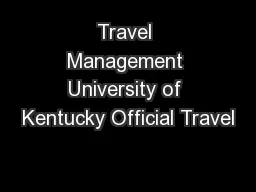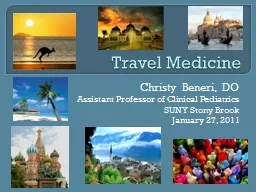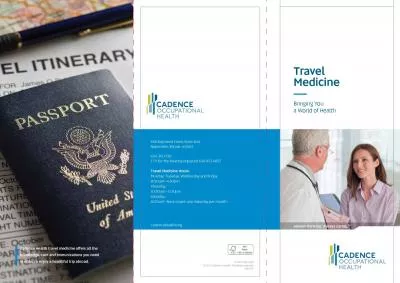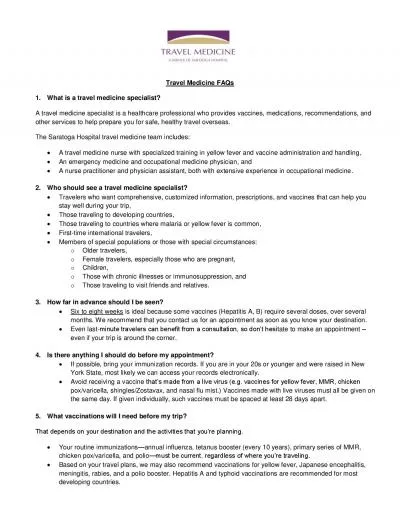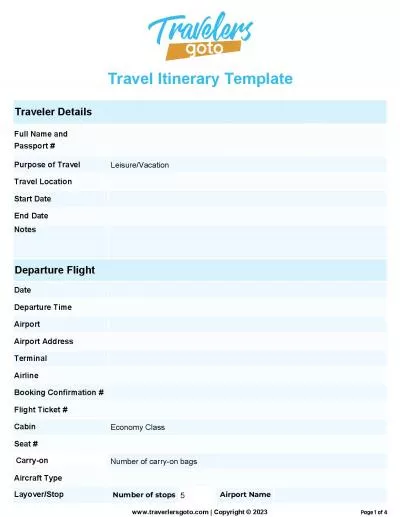PPT-Travel Medicine Christy
Author : berey | Published Date : 2021-12-06
Beneri DO Assistant Professor of Clinical Pediatrics SUNY Stony Brook January 27 2011 Nothing to disclose Objectives 1 Review current travel advice and immunizations
Presentation Embed Code
Download Presentation
Download Presentation The PPT/PDF document "Travel Medicine Christy" is the property of its rightful owner. Permission is granted to download and print the materials on this website for personal, non-commercial use only, and to display it on your personal computer provided you do not modify the materials and that you retain all copyright notices contained in the materials. By downloading content from our website, you accept the terms of this agreement.
Travel Medicine Christy: Transcript
Download Rules Of Document
"Travel Medicine Christy"The content belongs to its owner. You may download and print it for personal use, without modification, and keep all copyright notices. By downloading, you agree to these terms.
Related Documents

